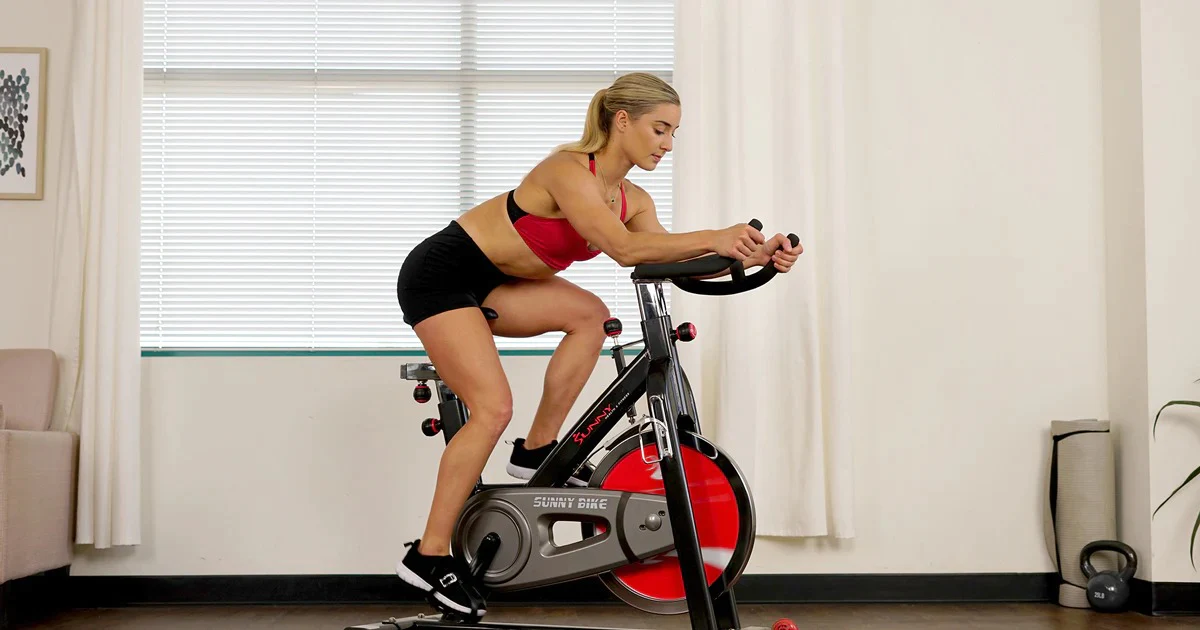Spin bikes have solidified their place as one of the most effective tools for achieving cardiovascular endurance, torching calories, and sculpting muscles. Spin bikes are popular in gyms, workshops, and homes all over the world because they offer a high-intensity workout with low impact. But you need to learn spin bike training techniques in order to get the most out of them and make the most of your fitness gains. This guide covers everything you need to know about spin bike workouts, from the right way to stand and ride to more advanced training plans.
Understanding the Basics: Form and Setup
First, move the seat up so that your legs are almost fully stretched out at the bottom of the pedal stroke. Do not hyperextend your knees; instead, keep them slightly bent. As you move the seat forward or backward, make sure your feet are clipped in or in the toe bars and your knees are straight over the pedals.
Once your bike is ready, make sure you keep the right form while you work out. To begin, keep your back straight and your shoulders loose while you work your core muscles to stabilize your body. Gripping the handlebars with a light but firm grip, position your hands comfortably, avoiding excessive tension in the upper body. Throughout your ride, maintain a smooth and fluid pedal stroke, avoiding any jerky or uneven movements.
Mastering the Ride: Techniques for Optimal Performance
Now that you’ve established the foundation of proper form and setup, it’s time to explore various techniques to enhance your spin bike workout:
Cadence Control: Cadence refers to the revolutions per minute (RPM) of your pedal stroke. Experiment with different cadences, ranging from a slow and powerful grind to a fast and light spin. Varying your cadence challenges different muscle groups and helps prevent monotony in your workout.
Resistance Management: Most spin bikes come equipped with a resistance knob or lever, allowing you to adjust the intensity of your ride. Strive to find the right balance of resistance that challenges you without compromising your form. Incorporate intervals of high resistance for strength-building and low resistance for speed and endurance.
Positional Techniques: Spin bikes offer various riding positions, each targeting different muscle groups. The three primary positions include seated, standing (or “out of the saddle”), and hovering (a hybrid between seated and standing). Alternate between these positions to engage different muscle groups and alleviate discomfort during longer rides.
Interval Training: A great way to improve your cardiovascular fitness and burn calories is to do short bursts of high-intensity work followed by rest times. Experiment with Tabata-style intervals, alternating between 20 seconds of maximal effort and 10 seconds of rest, or longer intervals of 1-2 minutes at a challenging pace followed by equal or longer recovery periods.
Visualization and Mindfulness: Spin bike workouts can be mentally demanding, especially during intense intervals or longer rides. Practice visualization techniques to stay focused and motivated, imagining yourself conquering hills or sprinting towards the finish line. Additionally, cultivate mindfulness by paying attention to your breathing, body sensations, and overall exertion level, allowing you to adjust your effort accordingly.
Advanced Strategies: Taking Your Workout to the Next Level
For spin bike riders who want to push their limits and perform at their best, using advanced training methods can make a big difference:
Power Meter Training: Investing in a power meter for your spin bike provides real-time data on your power output, allowing for precise monitoring and control of your intensity. Utilize power-based workouts to target specific energy systems and track your progress over time.
Heart Rate Zone Training: Monitoring your heart rate during spin bike workouts can help you optimize your training intensity and recovery. Determine your maximum heart rate and target different training zones, such as endurance, tempo, and anaerobic threshold, to elicit specific physiological adaptations.
Progressive Overload: Challenge your body by slowly raising the length, intensity, or frequency of your spin bike workouts. This will help you keep getting fit. Implement structured training programs that incorporate periodization principles, alternating between phases of high volume, intensity, and recovery.
Cross-Training and Recovery: While spin bike workouts are highly effective, incorporating cross-training activities such as strength training, yoga, or swimming can prevent overuse injuries and promote overall balance and mobility. Additionally, prioritize adequate rest and recovery between intense workouts to allow your body to adapt and grow stronger.
Conclusion
Learning how to use a spin bike for exercise is a process that takes time, effort, and a willingness to try new things. Whether you’re a beginner looking to kickstart your fitness routine or an experienced cyclist striving for peak performance, the principles outlined in this guide provide a roadmap to success. By honing your form, experimenting with various techniques, and incorporating advanced training strategies, you’ll rev up your fitness routine and unlock your full potential on the spin bike. So clip in, crank up the resistance, and embark on an exhilarating ride towards your fitness goals.

















Leave a comment